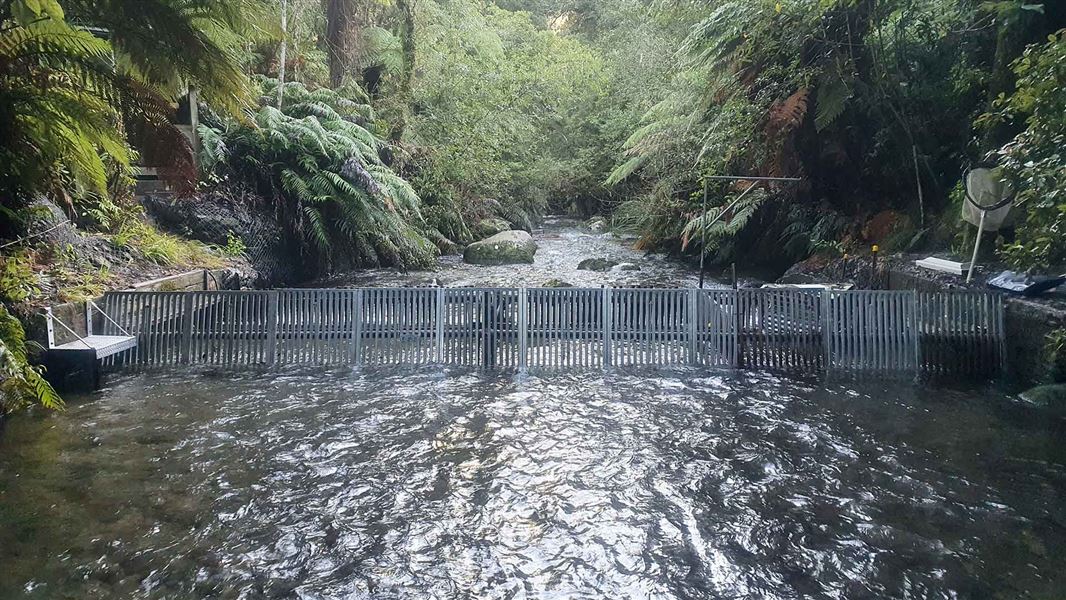Archived content: This media release was accurate on the date of publication.
Located on the Waipa Stream, the Waipa spawning trap is positioned within a significant spawning tributary of the Tongariro River, 24 km upstream from Lake Taupō. Fishery Rangers record the numbers of trout, their sex, length, weight and iteroparity (how many times individual fish have spawned).
The upgrades aimed to increase effectiveness of the trap by improving operational efficiency while reducing opportunities for migrating trout to evade capture.
Date: 27 April 2022
Experiment
In 2017 three new screens were constructed as part of an experimental upgrade to the front of the upstream pen of the trap. The move from the old individual round bars to metal screens constructed from vertical square bars, aimed to reduce the time taken for Fishery Rangers to remove and reinstall the trap. The new screens were initially designed to rest on a metal beam across the stream bed, using metal pegs to secure them. However, these proved difficult to align properly and weren’t user friendly.
Refinement
After a review of the setup in 2021 an improved approach was identified. A local engineering company was commissioned to construct new metal sliders which allowed the screens to move up and down independently. Moveable stays also allowed the screens to rest off the bottom at a specific height. The galvanised sliders and screens are easy to remove, so minimise potential obstructions during flood events or while the trap is decommissioned over the summer. Additional screens and sliders were fitted across the entire upstream side of the fish trap (upstream and downstream pens) to maintain a level and consistent barrier.
In addition to the screens a new metal working table was engineered from treadplate to replace the old damaged wooden unit. Bolted into place the new table is robust enough to survive significant flood events.
Finally, a new triangular barrier was located between the pens to minimise fish jumping between them and a layer of reinforced plastic mesh installed across the bed of the trap to retain larger rocks and reduce scouring caused by flood events.
Benefits
Moving to a modular sliding screen system has four main benefits:
- Fishery Rangers can easily clean the trap by raising the front screens to flush leaves, pumice and other debris from the trap.
- The separate screens can be used to manipulate flow to assist with moving accumulated gravel and help level the base of the trap if scouring has occurred following large flood events.
- Screens can be individually raised to increase water flow and encourage any ‘spent’ fish congregating above the trap to drop back into the downstream pen, where they can be processed and released downstream. This step is important as it allows us to determine the number of trout that were missed during flood events (by reviewing fin clips) and adjust figures accordingly.
- Sliding screens makes it easy to install and remove the trap. This also increases safety for fishery staff working around the trap.
